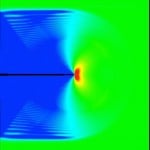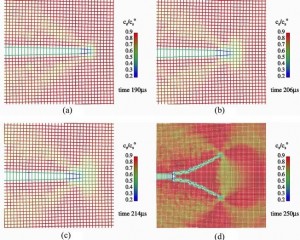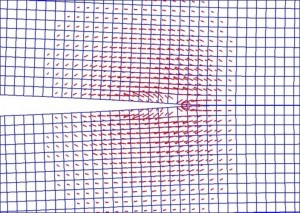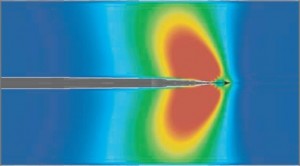
The goal is to study the effects rate-dependent inelastic material behavior (e.g., viscoelasticity, viscoplasticity, and continuum damage), and rate-dependent failure mechanisms (e.g., crazing, chain pull-out) on the fracture behavior of soft materials. We pursue this using a cohesive approach which partitions the energy dissipation rate of crack growth into inelastic processes of the bulk and failure processes of a cohesive zone of finite size. Our work focuses on developing mechanism-based cohesive models of rate-dependent failure mechanisms and numerical methods for finite element analysis of fracture and failure.




Figure 2: (a) Vector plot of the material force from plastic dissipation in a large plate and (b) color contour plot of the component of the material force from viscous dissipation in an elastomeric strip. The domain integral of the material force from inelastic dissipation gives the dissipation rate caused by crack growth and can be used to visualize the dissipation zone.
Collaborators
- Huajian Gao, Ph.D. Distinguished University Professor, Nanyang Technological University
- Sanjay Govindjee, Ph.D. Professor, Department of Civil and Environmental Engineering, University of California, Berkeley, CA
- Kevin J. Hemker, Ph.D. Professor, Department of Mechanical Engineering, Johns Hopkins University, Livermore, CA
- Patrick Klein, Ph.D. Sandia National Laboratories, Livermore, CA
- Neville Moody, PhD. Sandia National Laboratories, Livermore, CA

